
There’s no better way to outwit would-be intruders than by having a home security setup that’s smarter than they are, which, let’s be honest, isn’t usually a high bar. Sure, living in a friendly neighborhood is great. Maybe your kapitbahay waves at you every morning and even shares mangoes during summer. But let’s face it: good vibes are not a security system. You can’t expect your neighbor’s good intentions to chase off burglars at 2 AM.
Planning your home security isn’t just responsible; it’s a love letter to your future peace of mind. In the Philippines, where residential setups range from high-walled subdivisions to barangays where your front yard is basically the street, you don’t need to build a fortress or start digging a moat. The truth is, you can make your home safer and smarter with a few clever tricks, common sense, and some budget-friendly tech, no need to make your house look like the set of an action movie.
Whether you’re a proud new homeowner or just finally tired of pretending that your dog is an alarm system, these 10 smart and practical ways to secure your home in the Philippines are here to help. (And sorry, renters because this one’s mostly for folks who actually own their walls.)
Table of Contents
- Don’t Build High Walls
- Don’t Keep Valuables Inside
- Secure Your Air Conditioning Unit
- Avoid Large Dog Doors
- Avoid Installing Glass Near Your Doorknob
- Install Security Lighting
- Create Open Space
- Get a Watchdog
- Don’t Display Valuables
- Don’t Reveal Your Security System
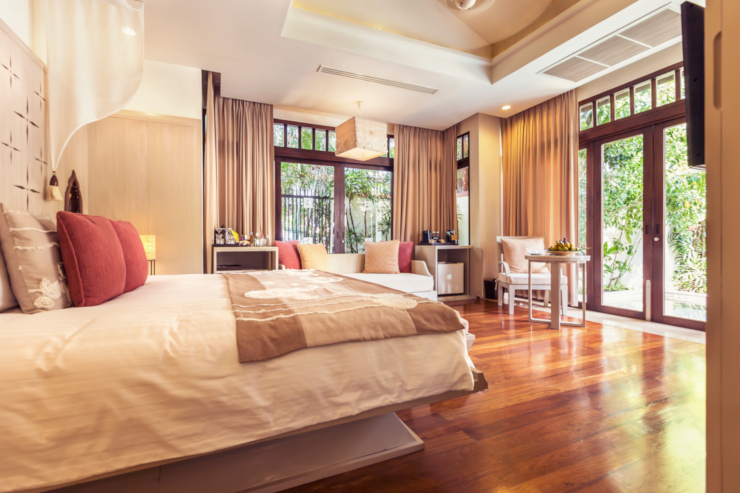
10 Ways to Secure Your Home in the Philippines
Here are 10 ways to secure your home in the Philippines:
1. Don’t Build High Walls
In the Philippines, towering walls and iron-clad gates often scream, “Mayaman ako!” or at the very least, “I really don’t want to talk to my neighbors.” But when it comes to home security, bigger doesn’t always mean better. The truth is, turning your house into a mini-Alcatraz might just attract more attention than you want. After all, nothing says “There’s something valuable in here!” quite like a 10-foot wall topped with barbed wire and a grumpy-looking statue at the gate.
The smarter move? Keep things simple and low-key. A clean, well-defined perimeter, a sturdy gate, modest fence, or even some neatly trimmed hedges, sends a subtle message: “Yes, I value my privacy. No, you’re not invited.” It keeps unwanted visitors guessing without making your home look like a villain’s lair.
The goal is to find that sweet spot between visibility and deterrence. You want your home to say, “I’m protected,” not “I’m hiding something.” Because the more hassle it looks like to break in, the more likely burglars will skip the drama and move on. Think smart design, good lighting, and access points that don’t scream, “Come rob me, I forgot to lock this!”
So go ahead and secure your home like a pro but skip the prison-yard aesthetic. Your house can be safe without looking like it’s about to be raided in an action movie.

2. Don’t Keep Valuables Inside
Your home might feel like your fortress, but to a burglar, it’s a potential treasure chest just waiting to be cracked open. That’s why it’s a genius move to keep your most prized possessions somewhere safer than your sock drawer or the “secret” spot behind the rice cooker. We’re talking about the real valuables here: important documents, heirloom jewelry, bundles of cash, and that rare coin collection you swear will fund your retirement someday.
Instead of stashing these goodies where burglars can play hide-and-seek, consider putting them in a place with laser beams, steel doors, and trained security, also known as a bank or professional storage facility. These places have better protection than your padlocked drawer and that one dog that sleeps through everything. Bonus: no more panicking during brownouts, thinking you “lost the envelope.”
By moving high-value items offsite, you’re not just protecting your valuables; you’re also making your home look way less interesting to intruders. Because let’s be honest, a burglar who breaks in only to find expired coupons and mismatched socks is going to leave confused, disappointed, and hopefully, empty-handed.
So go ahead, declutter your risk. Let your home say, “There’s nothing to see here,” while your real treasures chill safely in a vault, sipping metaphorical piña coladas under 24/7 surveillance.
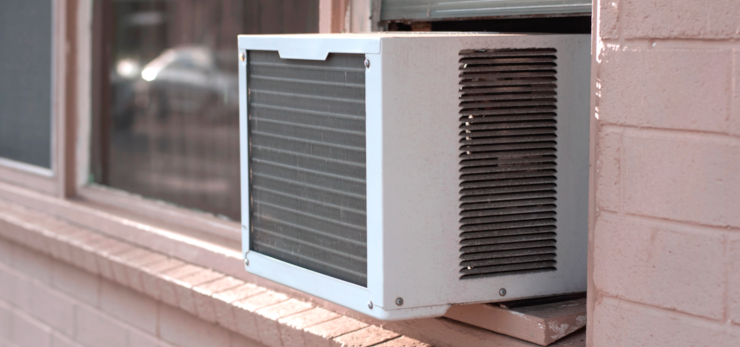
3. Secure Your Air Conditioning Unit
In the Philippines, window-type air conditioners are like the tinola of appliances—classic, affordable, and found in almost every home. They’re easy to install, easy on the wallet, and perfect for turning a sweatbox of a room into a cool oasis. But there’s one not-so-cool downside: they usually require a massive hole in your wall. And guess who loves massive holes in walls? Yep, burglars.
That gaping space left behind by your window-type AC is basically a welcome mat for thieves. It’s often big enough for a determined (or slightly overfed) intruder to squeeze through or at the very least, peek inside like a nosy tita checking if your house is “maaliwalas.” And if they can’t get through the hole, they might just settle for stealing the AC unit itself. Double whammy.
To avoid turning your AC into a burglar’s backdoor or shopping cart item, reinforce the area around it. Install metal grills, security brackets, or anything sturdy enough to say, “Not today, kuya.” You want ventilation, not an uninvited guest crawling through the wall at 2 a.m.
If you’re building or upgrading, consider leveling up to a split-type air conditioner. Mounted high on the wall and needing just a tiny hole for the pipe, it’s sleek, secure, and nearly impossible to wiggle through. Yes, it costs more upfront, but it’s quieter, more energy-efficient, and best of all, it doesn’t double as a thief-sized escape hatch.
So, chill wisely. Your comfort shouldn’t come at the cost of your security, or your entire AC vanishing in the night.
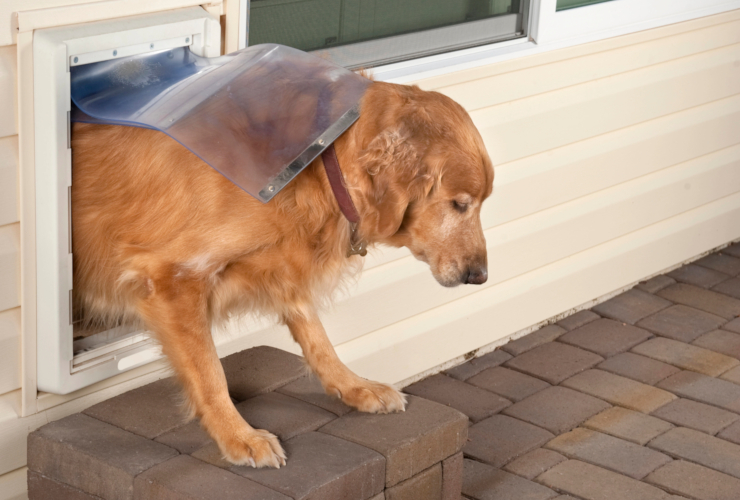
4. Avoid Large Dog Doors
Although it’s not very common in the Philippines, installing a dog door might seem like a fun, Western-style upgrade, especially if you have a spoiled fur baby who insists on coming and going like royalty. But before you cut a hole in your door and give your pup the freedom to roam, think twice.
That same convenient flap could also be an open invitation for the wrong kind of visitor. A determined intruder with enough motivation, and flexibility, could absolutely try to squeeze in, channeling his inner Labrador to make a grand (and awkward) entrance. Imagine explaining to your neighbors how a burglar got in because you gave your dog a private door. Not a good look.
If you really need one, opt for a secure, lockable dog door, preferably one that’s electronically triggered by your pet’s collar or microchip. At the very least, install it in a location that’s not visible from the street. Just remember: if your dog can fit through it, someone a bit more desperate probably can too. So while giving your pup VIP access is adorable, make sure it doesn’t become a burglar’s shortcut into your home.
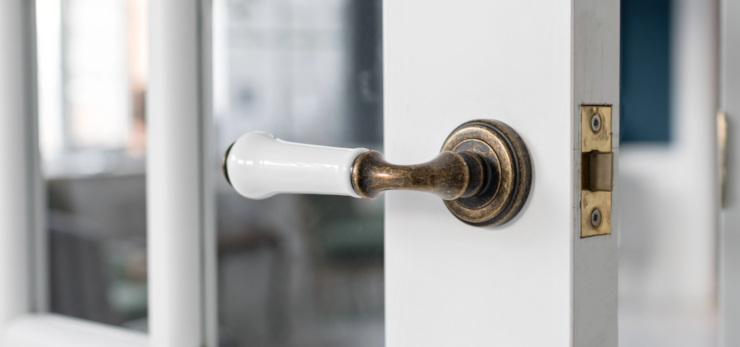
5. Avoid Installing Glass Near Your Doorknob
Glass panels can definitely level up your home’s aesthetic—sleek, modern, and just the right amount of “I’ve got taste.” But before you get too excited about those Pinterest-worthy door designs, here’s a little reality check: putting glass right next to your doorknob is basically sending a handwritten invitation to burglars that says, “Come on in, just break here.”
It’s like wrapping your house in elegance and then adding a secret entrance for criminals. One quick smash, and voilà—they can reach in and unlock your door faster than you can say “security deposit.”
If you really want that elegant look without giving intruders a cheat code, consider using reinforced or shatterproof glass, or make sure the glass panel is far enough from the lock to prevent any reach-around break-ins.
Better yet, install double-cylinder deadbolts that require a key from both sides because if they’re going to try something sneaky, let them at least work for it. Beauty is great, but let’s not make it too easy for the bad guys to turn your design choice into their shortcut.
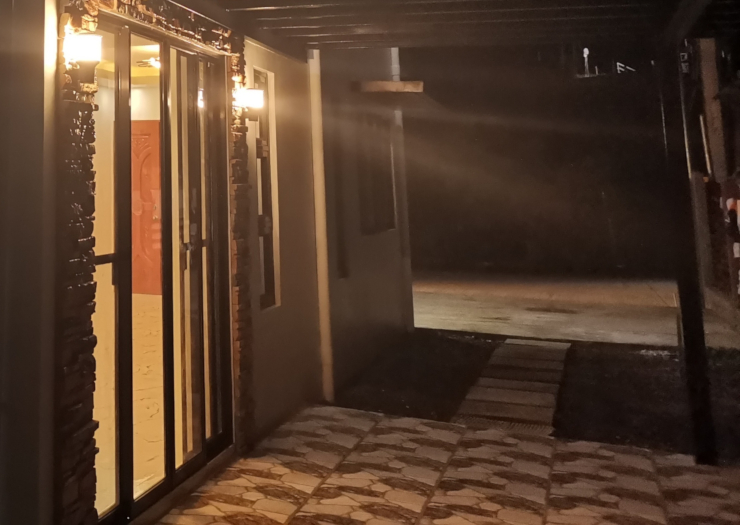
6. Install Security Lighting
Intruders have one thing in common: they absolutely love the dark. Shadows are their best friend, and they treat poorly lit areas like VIP entrances. That’s why installing a strong outdoor lighting system is one of the easiest (and brightest) ways to make them think twice. Think of it like this: the more your yard glows, the more their confidence shrinks. Motion-activated floodlights, pathway lights, and porch fixtures aren’t just practical; they’re like the security guards of your home who don’t sleep, blink, or ask for overtime.
But security isn’t the only perk. With well-placed lighting, your family can enjoy the outdoor parts of your home well into the evening, whether it’s a quiet dinner on the patio or just finding your way to the front door without stubbing your toe on the garden gnome.
It also reduces the risk of trips and falls, especially for kids, pets, and that one uncle who always forgets his glasses. And let’s not forget the glow-up: good lighting makes your landscape look stunning at night. Trees, walkways, and even that DIY rock garden can suddenly look like something straight out of a resort brochure.
So brighten things up! You’re not just keeping the bad guys away; you’re giving your home the literal spotlight it deserves.
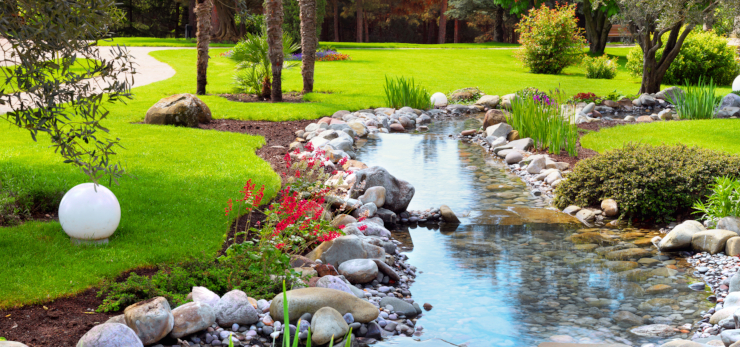
7. Create Open Space
Open spaces are an intruder’s worst nightmare. Why? Because sneaking around is a lot harder when there’s nowhere to hide. If your front yard looks like a jungle expedition, complete with thick bushes, overgrown hedges, and mysterious rustling sounds, congratulations because you’ve just created the perfect hiding spots for someone with bad intentions (and zero gardening skills). Burglars love dense shrubbery because it gives them front-row camouflage while they figure out how to break in without being seen.
So do yourself, and your home, a favor: keep the landscaping neat and open. Trim those hedges, keep bushes low, and avoid planting anything tall and bushy near windows, entry points, or walkways. If your plants start looking like they’re auditioning for a spy movie, it’s time to pull out the shears. The goal is to make intruders feel so exposed, they’d rather risk going back to bed than trying to crawl across your yard like an amateur ninja.
Of course, you don’t have to go full concrete jungle; just design your space with visibility in mind. A clean, open yard says, “I see you,” even when you’re not around. And if you really want to take things up a notch, pair your open space with motion-activated lights or a well-placed garden gnome that looks just a little too alert.

8. Get a Watchdog
Sure, every dog has an instinct to bark at strangers, especially the mailman, the neighbor, and occasionally, a suspicious-looking plastic bag blowing across the yard. But if you’re serious about home security, a trained watchdog can be more than just your furry doorbell. With the right training, your dog can become a loyal member of your security team, minus the uniform and overtime pay.
A well-trained watchdog doesn’t just bark at anything that moves (unlike your cousin’s chihuahua, who barks at ceiling fans). These dogs are taught to distinguish between friendly visitors and actual threats, giving you peace of mind whether you’re at home or away.
They’re alert, protective, and unlike security cameras, they can chase an intruder off the property, preferably with enough noise and teeth to make them rethink all their life choices.
Plus, let’s be honest: nothing says “try somewhere else” like a confident-looking dog staring down from the gate like he owns the place. It’s like your home has its own furry bouncer who takes no nonsense and accepts payment only in treats and belly rubs. So while all dogs are good dogs, having a properly trained one can give your security strategy some serious bite—literally.
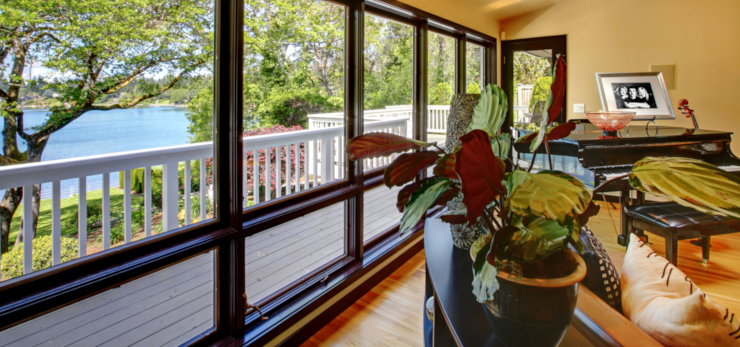
9. Don’t Display Valuables
Valuables are like shiny magnets for trouble. Leave them in plain sight, and you might as well hang a neon sign that says, “Steal me, I’m worth it!” Whether it’s the latest iPhone, a designer bag, or even that sleek new gaming console, a quick glance through your window could be all it takes for a wandering thief to stop, stare, and start mentally calculating his potential payday.
Think of it from the burglar’s perspective: he’s walking by, minding his own shady business, and suddenly spots your laptop glowing like a treasure chest in a video game. Jackpot! From that moment on, he’s not admiring your home’s interior design; he’s plotting the fastest way to make your valuables his valuables.
So do yourself (and your insurance policy) a favor: keep your valuables out of sight. Don’t leave gadgets near windows, avoid displaying expensive jewelry like you’re running a boutique, and maybe don’t store your life savings in a glass bowl on the coffee table. Use curtains, blinds, or frosted windows to keep nosy eyes out, and maybe don’t brag too loudly about your new TV (it’s common in the Philippines) unless you want uninvited fans.
Remember, the more invisible your valuables are, the less tempting your home becomes. Out of sight, out of mind… and ideally, out of a thief’s to-do list.

10. Don’t Reveal Your Security System
When it comes to home security, a little mystery goes a long way. You want potential intruders to second-guess everything, from whether you’re home to whether your dog bites or just barks with enthusiasm. That’s why plastering your house with security stickers in big, bold letters, “Protected by XYZ Security!”, might not be the smartest move. Sure, it looks tough, but to a clever thief, it’s basically a cheat sheet.
Think about it: you’re handing them valuable intel before they even step onto your lawn. The brand of your alarm system, the possible entry points that aren’t covered, even the fact that your sticker is a decade old and fading like your last New Year’s resolution. It’s like telling them, “Here’s my defense strategy, go ahead and Google the manual!”
Instead, play it smart. If you want to use security signs or decals, keep them vague and strategic. Don’t reveal your whole setup like you’re giving a tour. Place warnings in areas that suggest you’re watching but don’t give away how. Let them wonder: Is there a camera in the mailbox? A tripwire in the bushes? A ninja-trained parrot in the foyer?
The goal is to make your home feel unpredictable, like a real-life obstacle course from a heist movie. Because when thieves don’t know what they’re up against, most of them won’t even try. Keep ’em guessing, and ideally, keep ’em moving.
Final Thoughts on How to Secure Your Home in the Philippines
Securing your home in the Philippines doesn’t mean turning it into Fort Knox or living like you’re expecting a zombie apocalypse. With a few smart upgrades, a pinch of common sense, and maybe a dog that barks louder than it bites, you can sleep peacefully knowing your house isn’t an easy target.
Remember, burglars don’t like challenges; they prefer the homes that practically roll out a welcome mat. So make your home look like a trap, not a treat. Stay safe, stay smart, and if all else fails, install motion lights and let your mother-in-law stay over because nothing scares off intruders faster.
What is your experience with home defense in the Philippines? Share it in the comment section.
You may also like:


